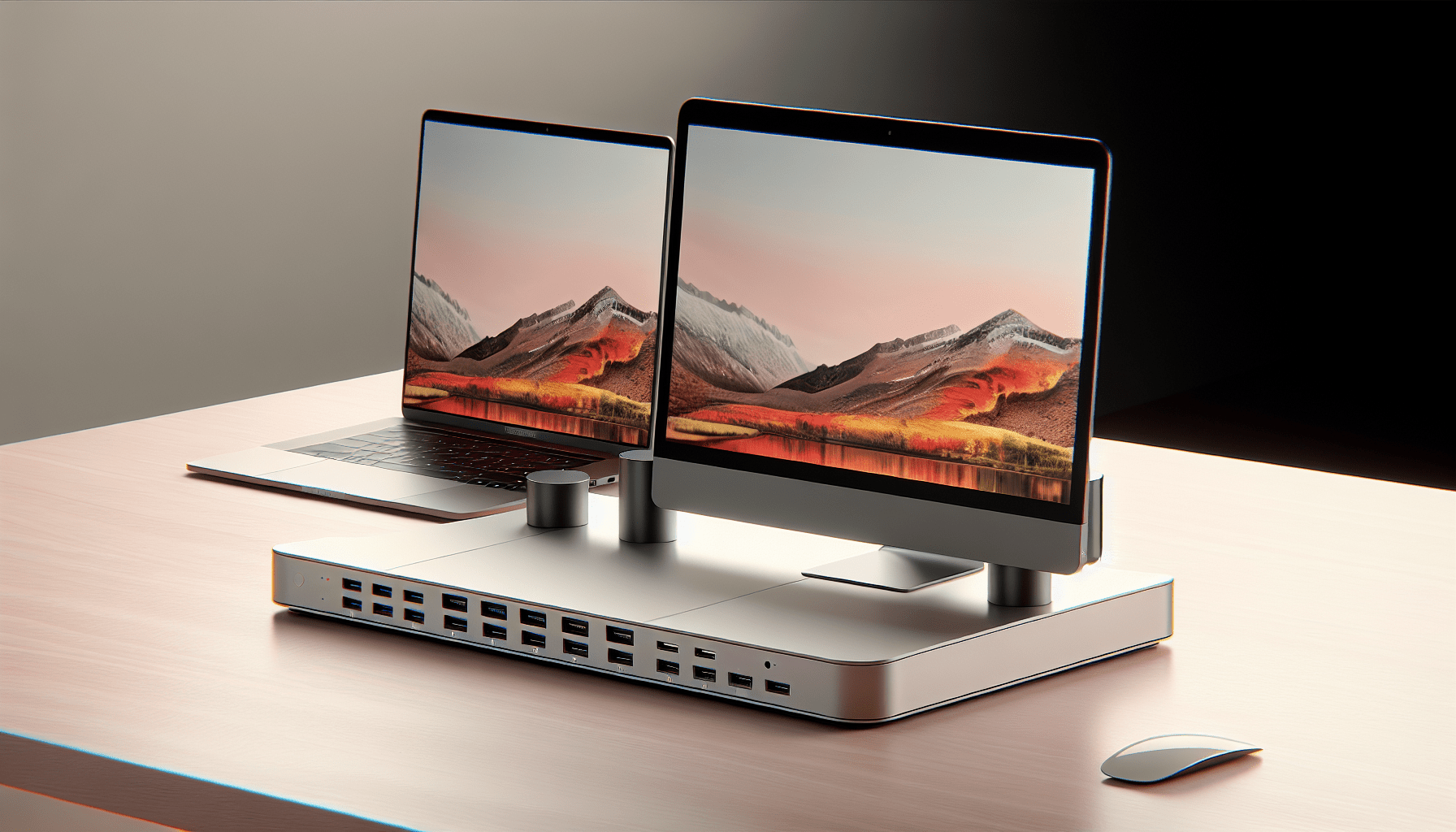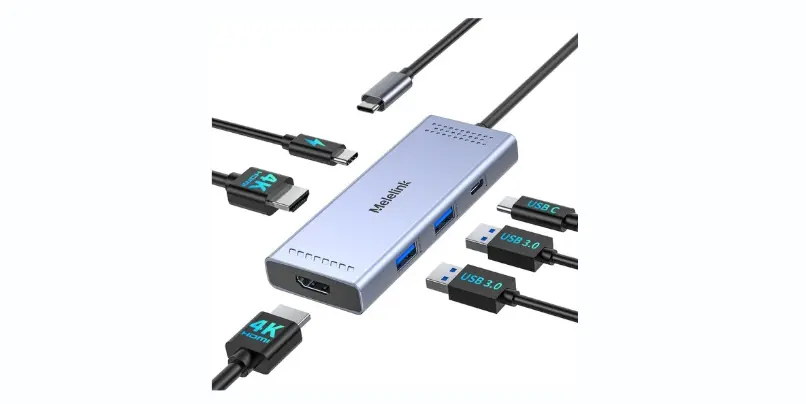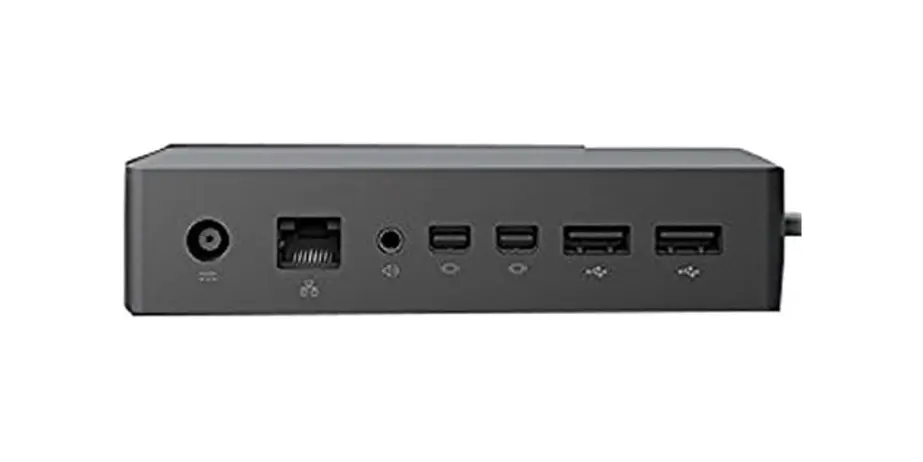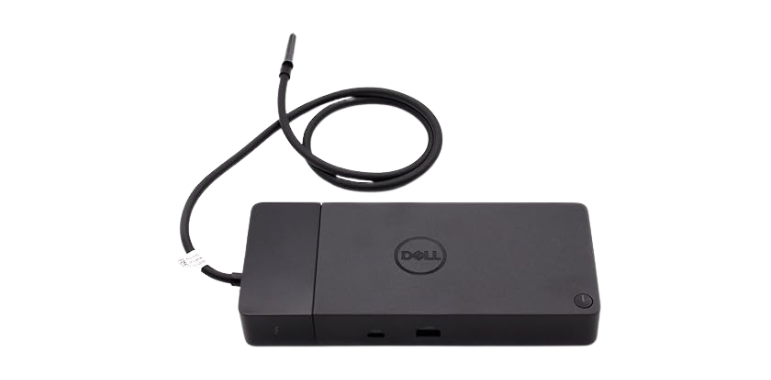Have you ever wondered how to transform your laptop into a dual-screen powerhouse?
Imagine us sitting in our cozy home office, tapping away on our trusty laptops. The day begins with promise, productivity shimmering on the horizon of our screens. Yet, as we navigate through the sea of tabs, documents, and applications, our laptop screen starts feeling a tad cramped. We hear a little voice whispering a simple solution: dual-screen setups, achieved with the aid of docking stations. The magic of it lies in the newfound space, less neck craning, and the elegance of streamlined productivity.
A docking station breathes versatility into our laptops, elevating them from portable computers to full-blown workstations. It sounds like a tale from a tech fairyland, promising a utopia where we can dock and undock our laptops at will. But which docking stations truly reign supreme for dual-screen setups? Let’s venture through this landscape of cables and connectors, exploring docking stations that promise to simplify our digital lives.
What Makes a Docking Station Essential for Dual-Screen Setups?
Before we dive into the world of docks, we should contemplate why they are essential. Docking stations are the unsung heroes behind a dual-screen setup’s seamless operation. They’re like the trusted sidekick who never lets us down, transforming the usual chaos into the calmest of workflows. They connect multiple devices and support various accessories, multiplying our work surface to create an empire of productivity.
We might wonder, however, what distinguishes a basic docking station from a powerhouse one. The best docking stations for dual-screen setups are those that offer multiple ports, are compatible with our devices, and provide stable data transfer. They become the bridge between our solitary laptop and the vast world of external displays and peripherals.
Top Docking Stations for Dual-Screen Laptop Setups
Let’s consider some standout options that can help us achieve our dreamy dual-screen setup. We’ve curated a list of top docking stations that should meet a range of needs, from our basic setups to the more complex technical demands.
1. Dell D6000 Universal Dock
The Dell D6000 stands as a stalwart in the docking station realm, offering the tantalizing promise of universal compatibility. We find that its design speaks directly to our desire for simplicity and functionality.
Features
- Ports: Three USB-A 3.0 ports, two USB-C ports, and connections for dual 4K displays.
- Compatibility: Works with both Windows and macOS systems.
- Connectivity: Offers plug-and-play functionality, minimizing setup time.
We appreciate how it supports two 4K displays flawlessly, letting us leap into our work without a hitch. No longer do we need to toggle between screens like a frantic orchestral conductor.
2. HP Thunderbolt Dock 120W G2
Here is a docking station that doesn’t just perform; it stands out with an aesthetic flourish. This HP dock is a sleek, circular device, bringing an element of elegance to our workspace.
Features
- Ports: Two USB-C ports, four USB-A ports, audio jack, RJ-45, HDMI, and DisplayPort.
- Power Delivery: Provides up to 100W power delivery, charging our laptops while they work.
- Display Support: Capable of supporting dual 4K displays or a single 5K display.
We find it hard not to admire the versatility of this dock, especially given its ability to charge our devices and keep us connected. It’s like having a high-tech butler tending to our daily tech needs.
3. Anker PowerExpand Elite 13-in-1
Anker steps into our list by offering a powerhouse of connectivity. The sheer number of ports makes it impossible not to feel a little awe, like standing before a tech monolith.
Features
- Ports: Dual HDMI ports, Dual USB-C data ports, multiple USB-A ports, Ethernet port, and SD card reader.
- Power Delivery: Supports power delivery for fast charging.
- Unique Feature: Includes a built-in cooling feature to prevent overheating.
This docking station whispers efficiency, letting us juggle multiple devices without ever breaking a sweat. If our workspace feels like a crowded dinner party, this dock is the maître d’, deftly managing each of our devices.
4. CalDigit TS3 Plus
The CalDigit TS3 Plus boasts a compact, but mighty design, packing an extensive number of ports into a sleek, aluminum enclosure.
Features
- Ports: Thunderbolt 3, USB-A, USB-C, DisplayPort, Ethernet, and SD card slots.
- Display Support: Offers dual 4K display support or a single 5K display connection.
- Build Quality: The robust aluminum design enhances durability and aesthetics.
With compatibility for both Mac and PC, it provides a universal connection solution that caters to our inner perfectionist. Every cable finds its home here, filling us with a sense of organizational satisfaction.
5. Plugable UD-6950H
Plugable remains a celebrated name in the docking station universe, known for its reliability and performance. The UD-6950H is no different, serving as a testament to quality engineering.
Features
- Ports: Dual HDMI & DisplayPort, six USB-A 3.0 ports, Ethernet, and audio in/out.
- Compatibility: Flourishes with Windows environments.
- Resolution Support: Handles dual 4K displays brilliantly, offering crisp, clear visuals.
This dock is like a Swiss Army knife for our laptops, curbing our port anxiety and ensuring every accessory is at our service.

How to Choose the Right Docking Station for Our Needs
Navigating the docking station landscape can sometimes feel like a labyrinth filled with cables and connections. Before we succumb to this dizzying array, let’s break down our needs and see how we can match them with the right docking station.
Compatibility
To avoid buying a docking station that resembles a long-lost spaceship component and lays dormant in our drawer, we should first consider its compatibility with our laptop’s operating system and connectors. Not every dock plays nice with every system, so a quick compatibility check saves us from future frustration.
Number of Ports and Types
We should also take stock of our current and future port needs. Do we often find ourselves rummaging for USB ports like they’re buried treasure? Then perhaps a docking station with more ports is the answer.
Power Delivery
A docking station with power delivery doesn’t just tidy up our workspace but also replenishes our laptop’s battery while we work. We must check if our dock can power our devices, as this reduces the chaos of tangled power cables.
Resolution and Display Support
It’s crucial to ensure our docking station can handle the resolution we need. Two 4K displays demand a dock up to the task. We don’t want our new setup to feel like upgrading to a penthouse only to find the elevator is broken.
Design and Build Quality
Finally, the design and build quality matter. We need something that’s not just functional but also blends seamlessly into our workspace aesthetic. Who knew a docking station could be both a workhorse and a stylish roommate?
Setting Up a Dual-Screen Laptop Environment
After finding our ideal docking station, we want to slide into setup mode as smoothly as possible. We should lay out all components and envision our dream workspace. As we connect everything together, here are some steps we can follow:
-
Connect the Docking Station: First, attach the docking station to our laptop using the compatible cable, making sure everything is snug and secure.
-
Connect External Displays: Use HDMI, DisplayPort, or USB-C cables, depending on the dock and monitor inputs. We must double-check the resolution settings to ensure they’re optimal for dual display use.
-
Attach Peripherals: Plug in any additional peripherals like keyboards, mice, and external hard drives. Our docking station should have abundant ports for all our gadgets.
-
Power Up: If our dock has power delivery, let’s make sure it’s charging our laptop. This way, we can avoid the dreaded low-battery notification interrupting our flow.
-
Settings Adjustment: On our laptop, we must configure display settings to suit our preference. We want to extend rather than duplicate the desktop for a true dual-monitor experience.
-
Enjoy Seamless Productivity: With everything set up, we should pat ourselves on the back and admire our work. We’ve built a sanctuary of productivity, where ideas can flourish and screens hold limitless possibilities.

Common Troubleshooting Tips and Tricks
As much as we’d like everything to go off without a hitch, technology can sometimes throw a spanner in the works. Here are some common issues we might face and tips to resolve them:
Display Issues
If one of our monitors isn’t displaying, we should double-check cable connections and inspect display settings. Ensuring the correct input source is selected on the monitor can often resolve display problems.
Connectivity Problems
In the event our devices aren’t connecting properly, we must ensure that all drivers are up to date. Restarting both the docking station and the laptop can sometimes refresh and resolve connectivity issues.
Resolution Problems
A display may be stretched or not as sharp. Checking that our display settings are correct in our operating system’s control panel/dashboard can help. We should match the display settings to the monitor’s native resolution.
Power Delivery Failures
If the laptop isn’t charging, checking the power delivery compatibility and cables may solve the issue. Not all laptops and docks are power delivery compatible, so confirming specifications can be key.
The Future of Docking Stations and Dual-Screen Setups
As technology continues its march forward, docking stations are not left idling on the side. The future looks promising with advancements in wireless docking and augmented reality displays, which may soon redefine dual-screen setups.
Wireless Docking
Cutting the tangle of cables, wireless docking is quietly emerging. As it matures, we foresee a world smack dab in a wireless wonderland, with no cables a trip hazard as we flit from desk to kitchen to sofa.
Augmented Reality Workspaces
Augmented reality promises to evolve how we interact with screens. Imagine us donning AR glasses and swiping through applications floating mid-air. Docking stations may become less physical and more virtual, accommodating this digital evolution.
Conclusion
As we draw the curtains on our exploration into the world of docking stations for dual-screen laptop setups, we’re reminded how these compact devices hold the key to expansive digital worlds. Choosing the right dock can unlock productivity, granting us the capacity to work like never before. Whether mounting a mountain of current tasks or building bridges to future tech, these docking stations offer brilliant companionship on our journey. As we prepare to expand our workspaces, we’ll reconnect with the simple joy of seamless operation and infinite screen space. Here’s to our next adventure in multi-screen magic and the docking stations that make it possible.



